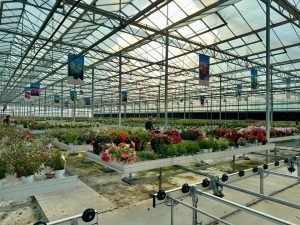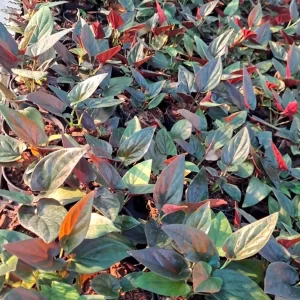- English
- Chinese
- French
- German
- Portuguese
- Spanish
- Russian
- Japanese
- Korean
- Arabic
- Irish
- Greek
- Turkish
- Italian
- Danish
- Romanian
- Indonesian
- Czech
- Afrikaans
- Swedish
- Polish
- Basque
- Catalan
- Esperanto
- Hindi
- Lao
- Albanian
- Amharic
- Armenian
- Azerbaijani
- Belarusian
- Bengali
- Bosnian
- Bulgarian
- Cebuano
- Chichewa
- Corsican
- Croatian
- Dutch
- Estonian
- Filipino
- Finnish
- Frisian
- Galician
- Georgian
- Gujarati
- Haitian
- Hausa
- Hawaiian
- Hebrew
- Hmong
- Hungarian
- Icelandic
- Javanese
- Kannada
- Kazakh
- Khmer
- Kurdish
- Kyrgyz
- Latin
- Latvian
- Lithuanian
- Luxembou..
- Macedonian
- Malagasy
- Malay
- Malayalam
- Maltese
- Maori
- Marathi
- Mongolian
- Burmese
- Nepali
- Norwegian
- Pashto
- Persian
- Punjabi
- Serbian
- Sesotho
- Sinhala
- Slovak
- Slovenian
- Somali
- Samoan
- Scots Gaelic
- Shona
- Sindhi
- Sundanese
- Swahili
- Tajik
- Tamil
- Telugu
- Thai
- Ukrainian
- Urdu
- Uzbek
- Vietnamese
- Welsh
- Xhosa
- Yiddish
- Yoruba
- Zulu
- Kinyarwanda
- Tatar
- Oriya
- Turkmen
- Uyghur

Otu mgbe na-ejikarị ahịhịa dị n'ime syngonA na-akpọkwa taro. Mpempe akwụkwọ ya na-adịghị ahụkebe na ụdị ihe dị iche iche na-arịọ maka ọtụtụ ndị maka osisi na-acha akwụkwọ ndụ na-acha akwụkwọ ndụ.

Syngon
Mkpa nke ìhè nke ìhè photosynthesis
Ihe omume nke nnukwu osisi si na photosynthesis. Osisi na-emepụta ihe organic, na-agbanwe ike ọkụ n'ime ụdị kemịkal, ma na-enye onwe ha ike na nri site na photosynthesis. Sangonium dịkarịsịrị na Photontynthesis; N'ihi ya, ìhè zuru oke ga-emetụta mmepe na uto ya na uto ya.
Udi na agba nke epupụta
Agba na ụdị nke ndị na-emekọ sịga na-adabere na ọkụ. Ọ bụ ezie na ọkụ siri ike ma ọ bụ nke siri ike ga-eme ka akwụkwọ ya bụrụ nke na-adịghị mma ma ọ bụ edo edo na mpempe akwụkwọ iji gbanwee, ọkụ kwesịrị ekwesị nwere ike ime ka akwụkwọ ndị ọzọ dị mma.
General Ahụike na Ọnụego Uto
Enough and suitable light may help syngonium develop quickly, improve its general condition, and increase its resistance against diseases. Either too little or too much light will compromise the plant’s health and raise the insect and disease incidence.
Lightdị ọkụ: ọkụ eke
Osisi n'èzí na-adabere na ọkụ eke. Ọtụtụ mgbe ìhè anyanwụ na ike na-ekwe ka otu ọkụ dị iche iche na anwụ zuru oke, ọkara anwụ na-acha, na ìhè.
Isi mmalite ọkụ
Syngonium nwere ike ọ gaghị enweta ọkụ dị iche iche n'ime ụlọ ime ụlọ. Otu onye nwere ike iji isi mmalite ọkụ na-enye ọkụ n'oge a. Onyunyo na-acha uhie uhie, oriọna dị elu na-eme ka ọ bụrụ ebe a na-ahụkarị ọkụ nwere ike inye Syngonium na-efe efe.
Ogo nke ike ọkụ
Ọtụtụ mgbe na okomoko, ike dị ọkụ bụ ezigbo ngosipụta nke ọnọdụ ọkụ. Syngonium chọrọ ọkụ dị mma dabara na 1000 na 3000 Lux. Ìhè ma ọ bụ na-enwu gbaa ma ọ bụ nkụda mmụọ ga-emetụta mmepe ya.
Mmetụta nke gburugburu ọkụ dị iche iche na usoro syngonium
Ọmarịcha ọnọdụ ọkụ
Syngonium’s leaves burn readily under intense light conditions and have burnt edges or yellow patches. Strong sunshine especially in summer might cause the water in the leaves to evaporate too rapidly, therefore influencing their usual physiological processes.
Ọkụ Ọkụ
Syngonium’s dull-colored leaves grow slowly and are prone to lanky development under low light levels. The leaves start to thin and shape-wise vary. Long-term darkness will also reduce the disease resistance of the plant and raise the pest and disease incidence.
Ọnọdụ metụtara ọkụ ọkụ
For Syngonium, scattered light is the best fit light condition. This kind of light may minimize harm caused by direct intense light, equally illuminate the plants, and provide adequate light energy for photosynthesis. Syngonium’s leaves grow robust and have brilliant color in dispersed light.
Indextion nke erughị eru na oke ọkụ siri ike
Mgbaàmà nke ọkụ na-erughị eru
Akwụkwọ ya na-acha odo odo ma ọ bụ daa; Hue Hue.
Osisi ahụ na-etolite na nkwonkwo na nwayọ.
Na-ehura ya na-agbada ma malite ito dị iche iche.
Ọrịa iguzogide ọrịa na-ada na ọrịa nwere ike ibute otu.
Ihe ngosi nke ezigbo ọkụ
Akwụkwọ a na-agụnye oke mmiri ma ọ bụ ntụpọ odo.
Na epupụta na-akọrọ ma na-asacha mmiri ngwa ngwa.
The plant’s general condition worsens and growth stops.
Idozi maka ma kpamkpam
Bulie ncha.
Syngonium na-enweghị ọkụ zuru oke nwere ike ịnwe ọkụ site na usoro ndị a:
Ka ịbawanye ìhè eke, debe osisi dị n'akụkụ windo.
Na-egosipụta ìhè na-eji mgbidi ọcha ma ọ bụ ndị na-atụgharị uche na-abawanye ike ọkụ.
Maka ọkụ ndị ọzọ, jiri isi iyi ọkụ na-adịghị mma; Họrọ oriọna dabara maka mmepe osisi, gụnyere ihe ọkụkụ ọkụ ọkụ.
Ìhè na-enwe
You can lower Syngonium’s too strong light with the following techniques:
Iji duzie ìhè anyanwụ kpọmkwem, kpalie ihe ọkụkụ ahụ iji mee ka ọ dị mma ma ọ bụ ọnọdụ ọkụ.
Wụnye netthing ma ọ bụ anwụ na-acha na windo iji belata ike ahụ.
Kpuchie ahịhịa sitere na nnukwu mbibi ọkụ na-eji ndo n 'ndo na-acha akwụkwọ ndụ.
Meziwanye ụlọ gburugburu.
Họrọ ọnọdụ ọma.
Ekwesịrị itinye Sygonnium na ntọala ime ụlọ na-atụle ọnọdụ ọkụ. Ọtụtụ mgbe, a na-edebe ihe dị n'akụkụ ọwụwa anyanwụ ma ọ bụ windo na-eche ihu dị mma dị ka o nwere ike inye ọkụ zuru oke ma gbochie ìhè na ehihie.
Na-arụ ọrụ dị n'ime ụlọ.
Furthermore extremely crucial are the choice and placement of interior light sources. One may use LED plant lights as extra illumination. This kind of lamp can provide suitable wavelength and intensity to satisfy Syngonium’s illumination requirements. Hanging the light 30 to 50 cm above the plant, it should be lit 12 to 16 hours a day.
Mezie post gị oge niile.
Syngonium na-eto naanị n'okpuru ọkụ. Na-atụgharị nke ifuru ahụ ga-enyere n'akụkụ niile nke osisi iji nweta ọkụ, yabụ na-egbochi ihe a na-akụ elongation na akwụkwọ ndụ.

Syngon
Ngwakọta nwere ezi uche dị n'etiti ọtụtụ osisi
Enwere ike itinye Sygonnoum na osisi na osisi na-acha akwụkwọ ndụ na-acha akwụkwọ ndụ na-achọ ụdị ọnọdụ ọkụ ndị ọzọ iji mepụta micro-ecosystem, na-elekọta ndị ọzọ.
Syngon is an indoor green plant with great decorative value and great adaptability; however, it has some needs for light. Appropriate light may encourage its healthy development, making the leaves attractive in form and brilliant in color. The importance of light, the type of light, the effects of various light conditions on the growth of Syngonium, the symptoms of insufficient and excessive light and their remedies, and the optimization of the indoor light environment are among the several angles of discussion in this paper. By means of scientific and sensible light management, Syngonium not only enhances the interior environment’s natural beauty but also the comfort and air quality of the living space, thus augmenting the abundance of greeneries and vitality in people’s life.



